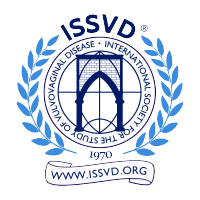Course Description
Learn about the most common types of vulvovaginal diseases and how to diagnose and treat them with this comprehensive course from the International Society for the Study of Vulvovaginal Disease. This course is perfect for healthcare professionals who want to gain a deeper understanding of vulvovaginal disease and how to best care for their patients. With insightful lectures from leading experts in the field, you’ll gain a wealth of knowledge that will help you provide optimal care for your patients. So join us today and learn all there is to know about vulvovaginal disease!
Key concepts covered include:
The Normal Vulva
N This session will review:
- A review of normal vulvar anatomy with proper terminology, so you can communicate like a pro with your colleagues and consultants.
- Normal variation in vulvar anatomy, so you won’t worry when you see these variants in your clinical practice.
The Vulvar Examination
E This session will review:
- The 8 components of the vulvovaginal exam. If you are doing it correctly, this exam is more comprehensive than you think! There is a demonstration video. Bring your popcorn.
Vulvovaginal Diagnostics
D This session will review:
- Recognize that chronic symptoms are nearly always a skin disease or pain syndrome rather than infection.
- Realize that sometimes a firm diagnosis cannot be made, but that empiric therapy can be useful.
- Know the procedure for performing a punch and shave skin vulvar biopsy.
- Understand what lesions are best sampled with a punch vs shave biopsy.
Vulvar Biopsy Workshop
B This session will review:
- The materials that are appropriate for use in a vulvar punch biopsy with and without a suture close and for a vulvar shave biopsy.
- The opportunity to watch Dr. Aruna Vekatesan perform and describe how to do a vulvar punch biopsy.
- The opportunity to watch Dr. Aruna Vekatesan perform and describe how to do a vulvar shave biopsy
- The opportunity to watch Dr. Aruna Vekatesan perform and describe how to suture a punch biopsy.
Basics of Therapy
T This session will review:
- Recognize the difference in the management of chronic symptoms with ongoing therapy compared to short-term therapy for acute symptoms.
- Be aware of the need for and safety of super potent corticosteroids on the vulva when used carefully.
- Avoid irritating topical medications.
Cases, Pearls and Pitfalls
P This session will review:
- Twelve steps to better vulvovaginal diagnosis and treatment, illustrated by unknown cases. Oh, and one bonus case, for a Baker’s Dozen.
What You Will Learn
Skill I
Anatomy
Learn how to differentiate the parts of the vulva and vagina.
Skill II
Diagnosis
Get a detailed overview of the various vulvar diseases and how to diagnose them.
Skill III
Experts
Learn about the latest types of vulvar biopsies and how to suture them.
Skill IV
Practice
Understand the different alternatives for an effective recovery of your patient.
Upon completing this course you will be able to:
- Recognize the normal and abnormal anatomy of the vulva and vagina;
- Gain an understanding of pitfalls in the diagnosis and management of chronic vulvar symptoms;
- Learn basic therapies of dermatologic conditions, including the use of topical corticosteroids;
- Be able to associate various vaginal conditions with their wet mount appearances;
- Be able to comfortably perform a vulvar biopsy for different types of lesions;
Course Instructors

Cynthia Rasmussen MD, FACOG
Director Emerita, Atrius Health,
Boston, MA – USA

Libby Edwards MD
Adjunct Clinical Professor of
Dermatology, University of
North Carolina,
Chapel Hill, NC – USA

Aruna Venkatesan MD
Clinical Professor of
Dermatology, Affiliated
Stanford Hospital & Clinics
Santa Clara Valley Medical
Center
San Francisco, CA – USA
Certification
Certificate Of Completion:
If you successfully complete the course and post test, you will receive a certificate of completion from the International Society for the Study of Vulvovaginal Disease. There is no CME applied for this program.
Instructions:
There will be twenty questions, each single answer “true or false”. You will also have the opportunity to leave comments.
Result Specifications:
– In order to receive the certification, you need to reach at least 80%.
– Below 80%. You may retake the quiz 2 more times.
If you still have difficulty, please contact us at [email protected].
Disclaimer: The questions contain at least two basic biases. One is that course attendees should use a microscope to examine vaginal secretions, and secondly, that you do not need a colposcope to examine the vulva if you have a magnifying glass.
